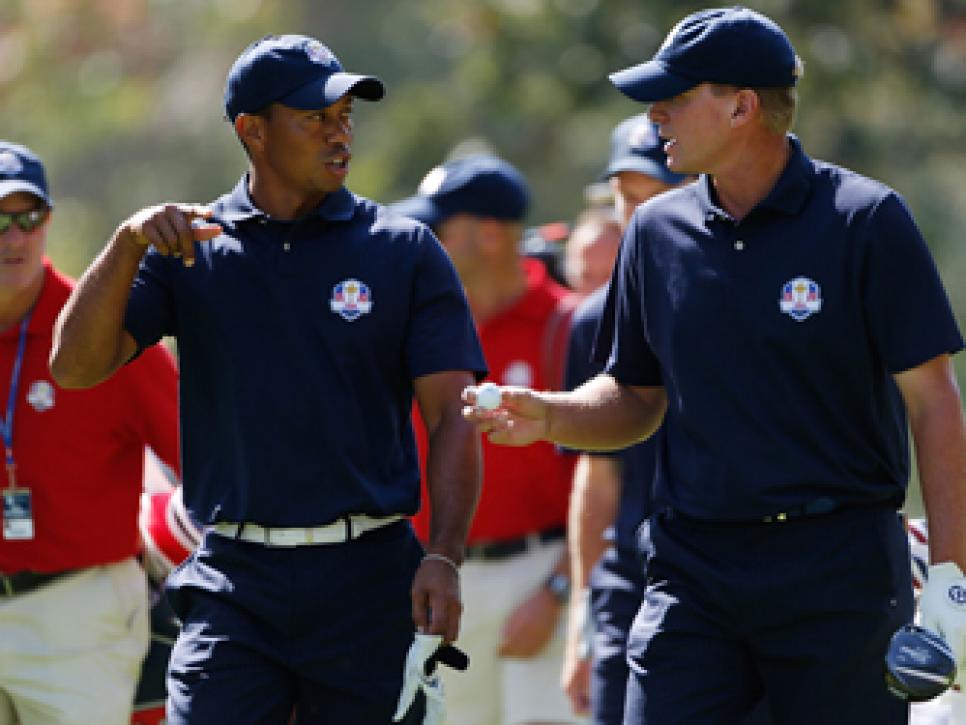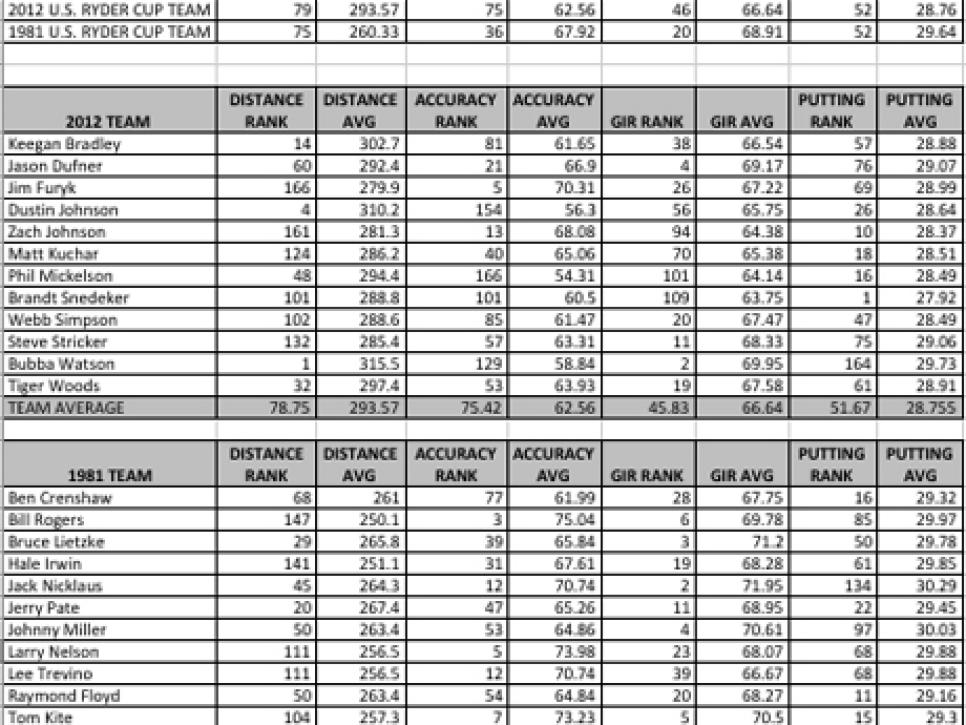The Loop
1981 U.S. Ryder Cup team beats 2012 squad
__By Mike Stachura
__[#image: /photos/55ad753db01eefe207f6b667]|||1981photo.jpg|||
Monday night Golf Channel aired one of its Top 10 specials, highlighting the best teams in golf history. The top choice was the 1981 U.S. Ryder Cup team, which blew out the European team 18 1/2 to 9 1/2 and featured a hall of fame roster that included Jack Nicklaus, Tom Watson, Lee Trevino, Raymond Floyd, Hale Irwin, Larry Nelson, Ben Crenshaw and Johnny Miller.
It's obvious the current U.S. squad does not have the historical horsepower of their forefathers from three decades ago. But there is another way to look at the two squads, thanks to PGA Tour statistics. Those numbers reveal that what constituted success in the game in 1981 seems no longer to be a requirement for success today.

If you take just four significant statistical areas (driving distance, driving accuracy, greens in regulation and putts per round), and look at the 1981 Ryder Cup team vs. the 2012 Ryder Cup team, what you see is a mirror with cracks. Tthe two squads show similar statistical prowess relative to the field they were competing against, but not in every area. And those differences give us much to discuss.
Comparing the average rank in each of those areas, there are strong similarities between the 1981 squad and the 2012 team in driving distance and putting. The average rank in driving distance in 1981 was 75, while it is 79 this year. (Yes, in raw numbers the current team is driving it 33 yards farther. That would be slightly more than the 30-yard increase in the tour's current driving distance average compared to the same number from 1981.) In putting, both squads yielded an average rank of 52.
However the similarities fall apart in the areas of driving accuracy and greens in regulation. The squad of elite players today hits fewer fairways and greens by a comparatively large margin vs. the 1981 squad, and the ranks in those areas differ just as significantly. In driving accuracy, the average rank for the 2012 team is 75; in 1981, the U.S. team's average rank was 36. For greens in regulation, the 2012 team ranked an above average 46th, but in 1981 the group rank was 20, with five players in the top six.

Does this disparity between mediocre driving and middling iron play and relative excellence say something about the state of the game today vs. 30 years ago? Does it suggest that even despite the ruling bodies' efforts to restore the value of driving accuracy through the groove-rule change, the top players can still be successful not driving the ball as accurately as the tour average? Does it mean that the top players today as a whole play with greater reckless abandon than their elite counterparts from three decades ago? Hard to say, given such a small sample. But the below numbers make for interesting discussion as the endless days of Ryder Cup practice rounds drone on.
One thing seems true, though. It certainly might explain why U.S. captain Davis Love III is keeping the fairways wider and the rough lower this week than they've ever been for a championship event played at Medinah No. 3.

